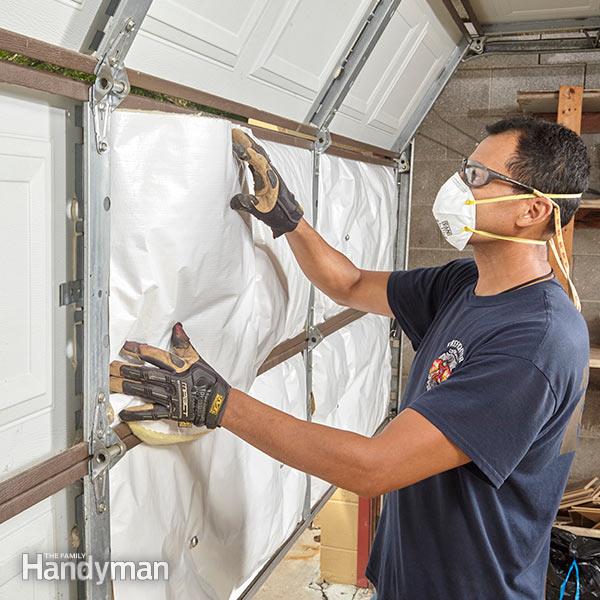If a new garage door is on your wish list, there are several types available, and some are better insulated, but it is important to understand the R-value when purchasing a new garage door, especially if all other insulating options have thus far failed you. For additional information about garage door insulation or to talk to an expert about installing a new garage door contact someone who specializes in garage door installation. A garage door installation expert near you will be happy to answer all of your questions.
Doors With Good Insulation
- Wood composite garage doors are good for insulation purposes because the door cores are filled with polystyrene insulation.
- Fiberglass garage doors are filled with polyurethane insulation.
- Vinyl garage doors are filled with polyurethane insulation.
Before Purchasing A New Garage Door
R-value – This rating is a measurement of the resistance to heat flow and will help you decide what rating of garage door to choose. Insulation materials are designed to stop the flow of heat, so the R-value is just a measurement of how well the materials are working. In garage doors, the higher the R-value, the better the door will be at stopping heat loss. Some door components do a better job than others at providing warmth – for example, polystyrene (more commonly referred to as Styrofoam) and polyurethane (another term for spray insulating foam) are the most commonly used forms of insulation for garage doors. Both are comprised of similar materials, but work differently, and, each provides a different level of protection. Polystyrene is inserted into garage doors in panels, so the drawback is that it cannot be an exact fit, thus encouraging cold or hot air to get into the garage. Polyurethane is sprayed into the door and the spray foam expands, thus forming a bond to the surface. Because it is bonded to the surface, the spray foam will also help insulate against outside noise, making for a quieter garage. Thus, as you might expect, the R-value is much higher with polyurethane.
When calculating what is the best garage door for you, you should factor in the R-value to determine just how efficient a garage door will be at insulating your garage and home. You will reap rewards in the end by saving on costly energy bills for the cold that marches through the door via the sweep or other nooks and crannies, and, for the heat that escapes in the Winter, or enters in the Summer making the garage hot and stifling. If you have rooms above the garage, or, perhaps use the garage as a workshop year around, you will definitely want to purchase a garage door with a high R-value.
Maintenance Fixes That Will Do The Trick
If you have a relatively new garage door, and are still experiencing cold or drafts in your attached garage, you may have to do a simple maintenance fix or two.
Weather stripping is one idea that works well to create a barrier from the cold outside entering the (hopefully) warm garage. Weather stripping will create a seal between the garage door and the garage door opening to prevent cold air from seeping in. Whether you are using weather stripping for the first time, or just replacing old weather stripping, you should know that it does not last forever, and occasionally needs to be replaced. This is because the cold, and even the severe heat, will cause the weather stripping to become brittle and cracked, allowing air to make its way between the door and the frame and create cold drafts.
Use fiberglass batt insulation to insulate the garage walls to provide more warmth to the garage. You can purchase the traditional type of fiberglass batt insulation, ensuring that you obtain the proper thickness for your wall proportions and follow the manufacturer’s instructions to the letter. There are kits designed specifically to insulate garage door, though the fiberglass batt is the most-popular method. Foam board and reflective barriers are also viable options. If the insulation installation does not do the trick, you may have to opt for a new door with an improved insulation design.
A garage unit heater will keep the garage warm with minimal space requirements and construction costs. Electric heaters are a good option, as you just turn them on for the frigid cold Winter days, not running them on a daily basis.
A mini-split heat pump is another electric option which is more efficient than an electric heater and will also do double duty to cool off when needed on those wicked hot days of Summer. Your better option to save your time and effort on small fixes is to get a well-insulated garage door. If you are interested in finding the perfect garage door to create a warmer garage environment all year around, or simply to cut your energy bills, contact an expert in garage door installation and repair today.




